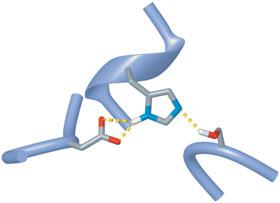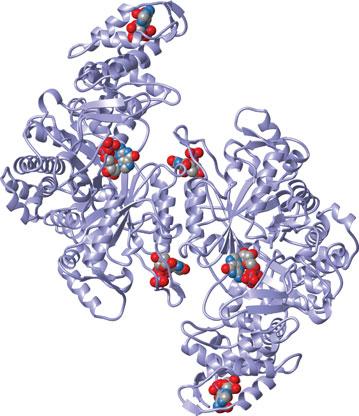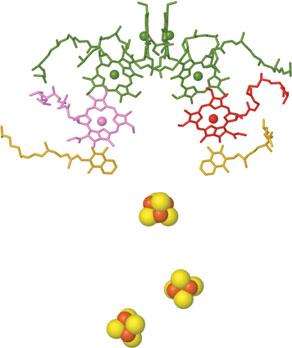PrinciplesofBiochemistry(5thEdition–Ebook PDFVersion)5thEdition–EbookPDFVersion

https://ebookmass.com/product/principles-ofbiochemistry-5th-edition-ebook-pdf-version-5th-editionebook-pdf-version/
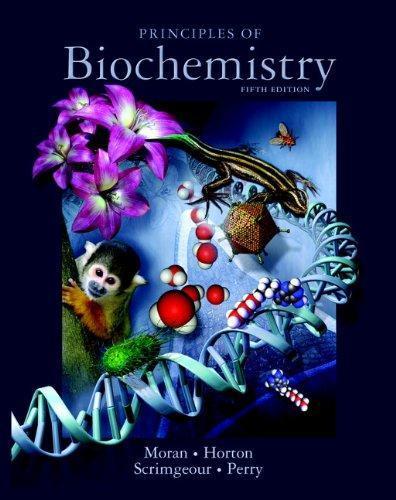
Instant digital products (PDF, ePub, MOBI) ready for you
Download now and discover formats that fit your needs...
Introduction to 80×86 Assembly Language and Computer Architecture – Ebook PDF Version
https://ebookmass.com/product/introduction-to-8086-assembly-languageand-computer-architecture-ebook-pdf-version/ ebookmass.com
The Law of Higher Education, 5th Edition – Ebook PDF
Version: Student Version Edition – Ebook PDF Version
https://ebookmass.com/product/the-law-of-higher-education-5th-editionebook-pdf-version-student-version-edition-ebook-pdf-version/
ebookmass.com
Plazas 5th Edition – Ebook PDF Version
https://ebookmass.com/product/plazas-5th-edition-ebook-pdf-version/ ebookmass.com
(eTextbook PDF) for Applied Social Research: A Tool for the Human Services 9th Edition
https://ebookmass.com/product/etextbook-pdf-for-applied-socialresearch-a-tool-for-the-human-services-9th-edition/
ebookmass.com

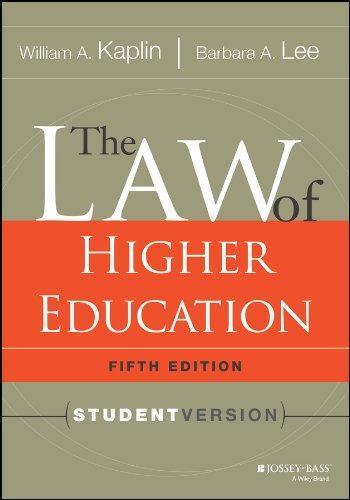
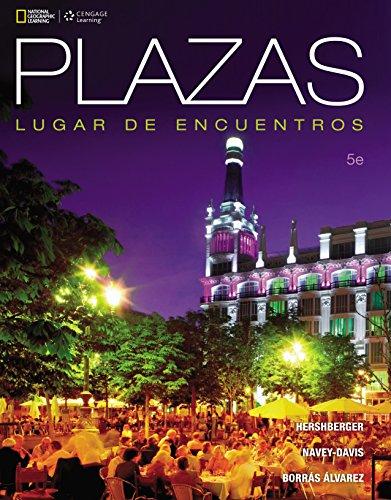
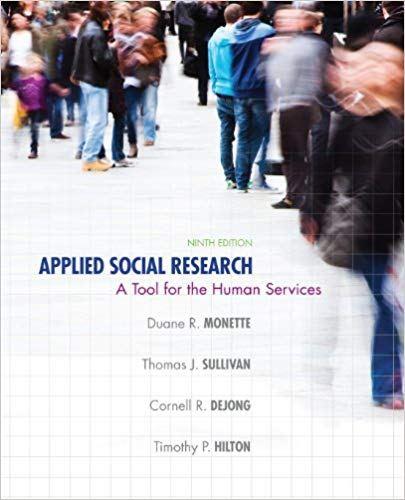
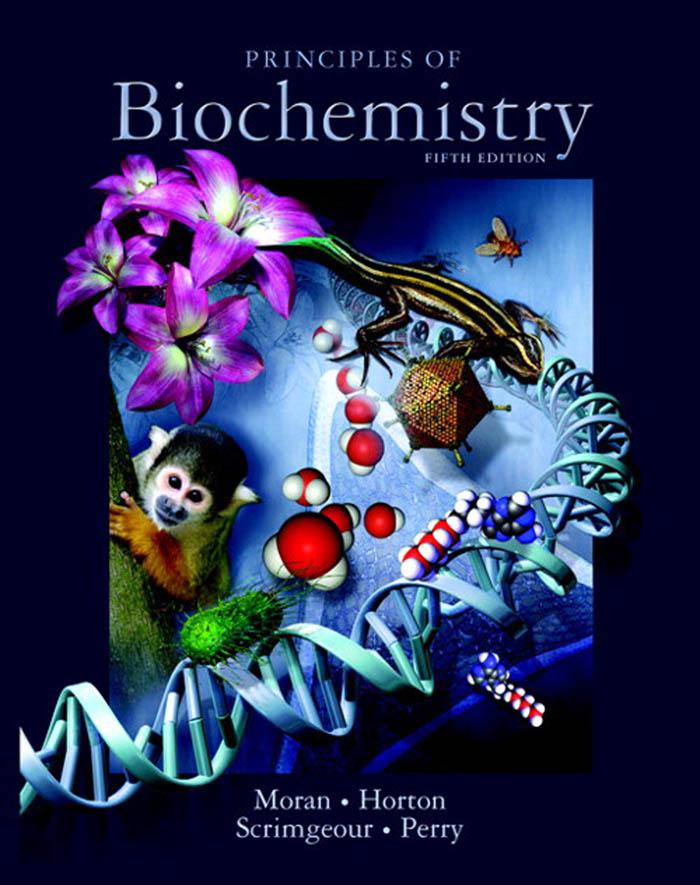
This page intentionally left blank
2.5Noncovalent Interactions 37
A.Charge–Charge Interactions 37
B.Hydrogen Bonds 37
C.Van der Waals Forces 38
D.Hydrophobic Interactions 39
2.6Water Is Nucleophilic 39
Box 2.3 The Concentration of Water 41
2.7Ionization of Water 41
2.8The pH Scale 43
Box 2.4 The Little “p” in pH 44
2.9Acid Dissociation Constants of Weak Acids 44
Sample Calculation 2.1 Calculating the pH of Weak Acid Solutions 49
2.10Buffered Solutions Resist Changes in pH 50
Sample Calculation 2.2 Buffer Preparation 50
Summary 52
Problems 52
Selected Readings 54
PART TWO
Structure and Function
3Amino Acids and the Primary Structures of Proteins 55
3.1General Structure of Amino Acids 56
3.2Structures of the 20 Common Amino Acids 58
Box 3.1 Fossil Dating by Amino Acid Racemization 58
A.Aliphatic R Groups 59
B.Aromatic R Groups 59
C.R Groups Containing Sulfur 60
D.Side Chains with Alcohol Groups 60
Box 3.2 An Alternative Nomenclature 61
E.Positively Charged R Groups 61
F.Negatively Charged R Groups and Their Amide Derivatives 62
G.The Hydrophobicity of Amino Acid Side Chains 62
3.3Other Amino Acids and Amino Acid Derivatives 62
3.4Ionization of Amino Acids 63
Box 3.3 Common Names of Amino Acids 64
3.5Peptide Bonds Link Amino Acids in Proteins 67
3.6Protein Purification Techniques 68
3.7Analytical Techniques 70
3.8Amino Acid Composition of Proteins 73
3.9Determining the Sequence of Amino Acid Residues 74
3.10Protein Sequencing Strategies 76
3.11Comparisons of the Primary Structures of Proteins Reveal Evolutionary Relationships 79
Summary 82
Problems 82
Selected Readings 84
4Proteins: Three-Dimensional Structure and Function 85
4.1There Are Four Levels of Protein Structure 87
4.2Methods for Determining Protein Structure 88



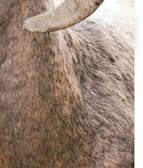
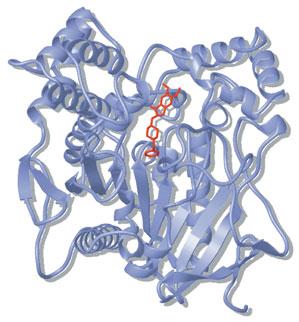
4.3The Conformation of the Peptide Group 91
Box 4.1 Flowering Is Controlled by Cis/Trans Switches 93
4.4The a Helix 94
4.5 b Strands and b Sheets 97
4.6Loops and Turns 98
4.7Tertiary Structure of Proteins 99
A.Supersecondary Structures 100
B.Domains 101
C.Domain Structure, Function, and Evolution 102
D.Intrinsically Disordered Proteins 102
4.8Quaternary Structure 103
4.9Protein–Protein Interactions 109
4.10Protein Denaturation and Renaturation 110
4.11Protein Folding and Stability 114
A.The Hydrophobic Effect 114
B.Hydrogen Bonding 115
Box 4.2 CASP: The Protein Folding Game 116
C.Van der Waals Interactions and Charge–Charge Interactions 117
D.Protein Folding Is Assisted by Molecular Chaperones 117
4.12Collagen, a Fibrous Protein 119
Box 4.3 Stronger Than Steel 121
4.13Structure of Myoglobin and Hemoglobin 122
4.14Oxygen Binding to Myoglobin and Hemoglobin 123
A.Oxygen Binds Reversibly to Heme 123
B.Oxygen-Binding Curves of Myoglobin and Hemoglobin 124
Box 4.4 Embryonic and Fetal Hemoglobins 126
C.Hemoglobin Is an Allosteric Protein 127
4.15Antibodies Bind Specific Antigens 129
Summary 130
Problems 131
Selected Readings 133
5Properties of Enzymes
5.1The Six Classes of Enzymes 136
134
Box 5.1 Enzyme Classification Numbers 137
5.2Kinetic Experiments Reveal Enzyme Properties 138
A.Chemical Kinetics 138
B.Enzyme Kinetics 139
5.3The Michaelis-Menten Equation 140
A.Derivation of the Michaelis-Menten Equation 141
B.The Calalytic Constant Kcat 143
C.The Meanings of Km 144
5.4Kinetic Constants Indicate Enzyme Activity and Catalytic Proficiency 144
5.5Measurement of Km and Vmax 145
Box 5.2 Hyperbolas Versus Straight Lines 146
5.6Kinetics of Multisubstrate Reactions 147
5.7Reversible Enzyme Inhibition 148
A.Competitive Inhibition 149
B.Uncompetitive Inhibition 150
C.Chitin 244
8.7Glycoconjugates 244
A.Proteoglycans 244
Box 8.2 Nodulation Factors Are Lipo-Oligosaccharides 246
B.Peptidoglycans 246
C.Glycoproteins 248
Box 8.3 ABO Blood Group 250
Summary 252
Problems 253
Selected Readings 254
9Lipids and Membranes 256
9.1Structural and Functional Diversity of Lipids 256
9.2Fatty Acids 256
Box 9.1 Common Names of Fatty Acids 258
Box 9.2 Trans Fatty Acids and Margarine 259
9.3Triacylglycerols 261
9.4Glycerophospholipids 262
9.5Sphingolipids 263
9.6Steroids 266
9.7Other Biologically Important Lipids 268
9.8Biological Membranes 269
A.Lipid Bilayers 269
Box 9.3 Gregor Mendel and Gibberellins 270
B.Three Classes of Membrane Proteins 270
Box 9.4 New Lipid Vesicles, or Liposomes 272
Box 9.5 Some Species Have Unusual Lipids in Their Membranes 274
C.The Fluid Mosaic Model of Biological Membranes 274
9.9Membranes Are Dynamic Structures 275
9.10Membrane Transport 277
A.Thermodynamics of Membrane Transport 278
B.Pores and Channels 279
C.Passive Transport and Facilitated Diffusion 280
D.Active Transport 282
E.Endocytosis and Exocytosis 283
9.11Transduction of Extracellular Signals 283
A.Receptors 283
Box 9.6 The Hot Spice of Chili Peppers 284
B.Signal Transducers 285
C.The Adenylyl Cyclase Signaling Pathway 287
D.The Inositol–Phospholipid Signaling Pathway 287
Box 9.7 Bacterial Toxins and G Proteins 290
E.Receptor Tyrosine Kinases 290
Summary 291
Problems 292
Selected Readings 293
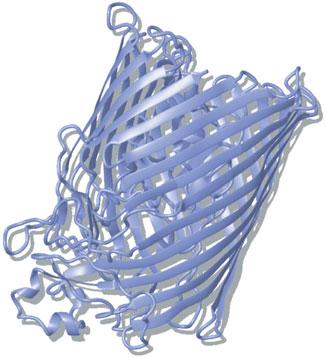

PART THREE
Metabolism and Bioenergetics
10Introduction to Metabolism 294
10.1Metabolism Is a Network of Reactions 294
10.2Metabolic Pathways 297
A.Pathways Are Sequences of Reactions 297
B.Metabolism Proceeds by Discrete Steps 297
C.Metabolic Pathways Are Regulated 297
D.Evolution of Metabolic Pathways 301
10.3Major Pathways in Cells 302
10.4Compartmentation and Interorgan Metabolism 304
10.5Actual Gibbs Free Energy Change, Not Standard Free Energy Change, Determines the Direction of Metabolic Reactions 306
Sample Calculation 10.1 Calculating Standard Gibbs Free Energy Change from Energies of Formation 308
10.6The Free Energy of ATP Hydrolysis 308
10.7The Metabolic Roles of ATP 311
A.Phosphoryl Group Transfer 311
Sample Calculation 10.2 Gibbs Free Energy Change 312
Box 10.1 The Squiggle 312
B.Production of ATP by Phosphoryl Group Transfer 314
C.Nucleotidyl Group Transfer 315
10.8Thioesters Have High Free Energies of Hydrolysis 316
10.9Reduced Coenzymes Conserve Energy from Biological Oxidations 316
A.Gibbs Free Energy Change Is Related to Reduction Potential 317
B.Electron Transfer from NADH Provides Free Energy 319
Box 10.2 NADand NADH Differ in Their Ultraviolet Absorption Spectra 321
10.10Experimental Methods for Studying Metabolism 321
Summary 322
Problems 323
Selected Readings 324
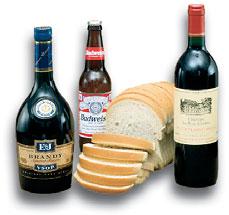
11Glycolysis
325
11.1The Enzymatic Reactions of Glycolysis 326
11.2The Ten Steps of Glycolysis 326
1.Hexokinase 326
2.Glucose 6-Phosphate Isomerase 327
3.Phosphofructokinase-1 330
4.Aldolase 330
Box 11.1 A Brief History of the Glycolysis Pathway 331
5.Triose Phosphate Isomerase 332
6.Glyceraldehyde 3-Phosphate Dehydrogenase 333
7.Phosphoglycerate Kinase 335
Box 11.2 Formation of 2,3-Bisphosphoglycerate in Red Blood Cells 335
Box 11.3 Arsenate Poisoning 336
8.Phosphoglycerate Mutase 336
9.Enolase 338
10.Pryuvate Kinase 338
14.4Electron Transport 423
A.Complexes I Through IV 423
B.Cofactors in Electron Transport 425
14.5Complex I 426
14.6Complex II 427
14.7Complex III 428
14.8Complex IV 431
14.9Complex V: ATP Synthase 433
Box 14.2 Proton Leaks and Heat Production 435
14.10Active Transport of ATP, ADP, and Pi Across the Mitochondrial Membrane 435
14.11The P/O Ratio 436
14.12NADH Shuttle Mechanisms in Eukaryotes 436
Box 14.3 The High Cost of Living 439
14.13Other Terminal Electron Acceptors and Donors 439
14.14Superoxide Anions 440
Summary 441 Problems 441
Selected Readings 442
15Photosynthesis
443
15.1Light-Gathering Pigments 444
A.The Structures of Chlorophylls 444
B.Light Energy 445
C.The Special Pair and Antenna Chlorophylls 446
Box 15.1 Mendel’s Seed Color Mutant 447
D.Accessory Pigments 447
15.2Bacterial Photosystems 448
A.Photosystem II 448
B.Photosystem I 450
C.Coupled Photosystems and Cytochrome bf 453
D.Reduction Potentials and Gibbs Free Energy in Photosynthesis 455
E.Photosynthesis Takes Place Within Internal Membranes 457
Box 15.2 Oxygen “Pollution” of Earth’s Atmosphere 457
15.3Plant Photosynthesis 458
A.Chloroplasts 458
B.Plant Photosystems 459
C.Organization of Cloroplast Photosystems 459
Box 15.3 Bacteriorhodopsin 461
15.4Fixation of CO2: The Calvin Cycle 461
A.The Calvin Cycle 462
B.Rubisco: Ribulose 1,5-bisphosphate Carboxylase-oxygenase 462
C.Oxygenation of Ribulose 1,5-bisphosphate 465
Box 15.4 Building a Better Rubisco 466
D.Calvin Cycle: Reduction and Regeneration Stages 466
15.5Sucrose and Starch Metabolism in Plants 467
Box 15.5 Gregor Mendel’s Wrinkled Peas 469
15.6Additional Carbon Fixation Pathways 469
A. Compartmentalization in Bacteria 469
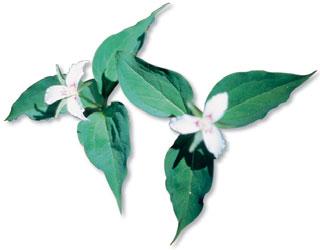
B. The C4 Pathway 469
C. Crassulacean Acid Metabolism (CAM) 471
Summary 472
Problems 473
Selected Readings 474

16Lipid Metabolism
16.1Fatty Acid Synthesis 475
475
A.Synthesis of Malonyl ACP and Acetyl ACP 476
B.The Initiation Reaction of Fatty Acid Synthesis 477
C.The Elongation Reactions of Fatty Acid Synthesis 477
D.Activation of Fatty Acids 479
E.Fatty Acid Extension and Desaturation 479
16.2Synthesis of Triacylglycerols and Glycerophospholipids 481
16.3Synthesis of Eicosanoids 483
Box 16.1 sn-Glycerol 3-Phosphate 484
Box 16.2 The Search for a Replacement for Asprin 486
16.4Synthesis of Ether Lipids 487
16.5Synthesis of Sphingolipids 488
16.6Synthesis of Cholesterol 488
A.Stage 1: Acetyl CoA to Isopentenyl Diphosphate 488
B.Stage 2: Isopentenyl Diphosphate to Squalene 488
C.Stage 3: Squalene to Cholesterol 490
D.Other Products of Isoprenoid Metabolism 490
Box 16.3 Lysosomal Storage Diseases 492
Box 16.4 Regulating Cholesterol Levels 493
16.7Fatty Acid Oxidation 494
A.Activation of Fatty Acids 494
B.The Reactions of -Oxidation 494
C.Fatty Acid Synthesis and -Oxidation 497
D.Transport of Fatty Acyl CoA into Mitochondria 497
Box 16.5 A Trifunctional Enzyme for -Oxidation 498
E.ATP Generation from Fatty Acid Oxidation 498
F. -Oxidation of Odd-Chain and Unsaturated Fatty Acids 499
16.8Eukaryotic Lipids Are Made at a Variety of Sites 501
16.9Lipid Metabolism Is Regulated by Hormones in Mammals 502
16.10Absorption and Mobilization of Fuel Lipids in Mammals 505
A.Absorption of Dietary Lipids 505
B.Lipoproteins 505
Box 16.6 Extra Virgin Olive Oil 506
Box 16.7 Lipoprotein Lipase and Coronary Heart Disease 507
C.Serum Albumin 508
16.11Ketone Bodies Are Fuel Molecules 508
A.Ketone Bodies Are Synthesized in the Liver 509
B.Ketone Bodies Are Oxidized in Mitochondria 510
Box 16.8 Lipid Metabolism in Diabetes 511
Summary 511
Problems 511
Selected Readings 513
20DNA Replication, Repair, and Recombination 601
20.1Chromosomal DNA Replication Is Bidirectional 602
20.2DNA Polymerase 603
A.Chain Elongation Is a Nucleotidyl-Group–Transfer Reaction 604
B.DNA Polymerase III Remains Bound to the Replication Fork 606
C.Proofreading Corrects Polymerization Errors 607
20.3DNA Polymerase Synthesizes Two Strands Simultaneously 607
A.Lagging Strand Synthesis Is Discontinuous 608
B.Each Okazaki Fragment Begins with an RNA Primer 608
C.Okazaki Fragments Are Joined by the Action of DNA Polymerase I and DNA Ligase 609
20.4Model of the Replisome 610
20.5Initiation and Termination of DNA Replication 615
20.6DNA Replication in Eukaryotes 615
A.The Polymerase Chain Reaction Uses DNA Polymerase to Amplify Selected DNA Sequences 615
B.Sequencing DNA Using Dideoxynucleotides 616
C.Massively Parallel DNA Sequencing by Synthesis 618
20.7DNA Replication in Eukaryotes 619
20.8Repair of Damaged DNA 622
A.Repair after Photodimerization: An Example of Direct Repair 622
B.Excision Repair 624
BOX 20.1 The Problem with Methylcytosine 626
20.9Homologous Recombination 626
A.The Holliday Model of General Recombination 626
B.Recombination in E. coli 627
BOX 20.2 Molecular Links Between DNA Repair and Breast Cancer 630
C.Recombination Can Be a Form of Repair 631
Summary 631
Problems 632
Selected Readings 632
21Transcription and RNA Processing
21.1Types of RNA 634
21.2RNA Polymerase 635
A.RNA Polymerase Is an Oligomeric Protein 635
B.The Chain Elongation Reaction 636
21.3Transcription Initiation 638
633

A.Genes Have a 5 3 Orientation 638
B.The Transcription Complex Assembles at a Promoter 639
C.The s sigma Subunit Recognizes the Promoter 640
D.RNA Polymerase Changes Conformation 641
21.4Transcription Termination 643
21.5Transcription in Eukaryotes 645
A.Eukaryotic RNA Polymerases 645
B.Eukaryotic Transcription Factors 647
C.The Role of Chromatin in Eukaryotic Transcription 648
21.6Transcription of Genes Is Regulated 648
21.7The lac Operon, an Example of Negative and Positive Regulation 650
A. lac Repressor Blocks Transcription 650
B.The Structure of lac Repressor 651 :
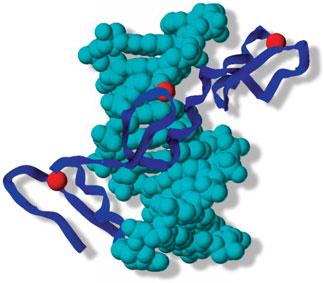
C.cAMP Regulatory Protein Activates Transcription 652
21.8Post-transcriptional Modification of RNA 654
A.Transfer RNA Processing 654
B.Ribosomal RNA Processing 655
21.9Eukaryotic mRNA Processing 655
A.Eukaryotic mRNA Molecules Have Modified Ends 657
B.Some Eukaryotic mRNA Precursors Are Spliced 657
Summary 663
Problems 663
Selected Readings 664
22Protein Synthesis
22.1The Genetic Code 665
22.2Transfer RNA 668
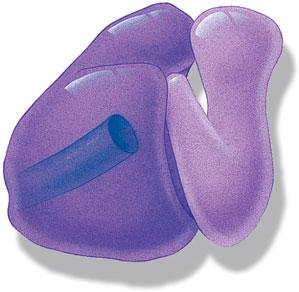
665
A.The Three-Dimensional Structure of tRNA 668
B.tRNA Anticodons Base-Pair with mRNA Codons 669
22.3Aminoacyl-tRNA Synthetases 670
A.The Aminoacyl-tRNA Synthetase Reaction 671
B.Specificity of Aminoacyl-tRNA Synthetases 671
C.Proofreading Activity of Aminoacyl-tRNA Synthetases 673
22.4Ribosomes 673
A.Ribosomes Are Composed of Both Ribosomal RNA and Protein 674
B.Ribosomes Contain Two Aminoacyl-tRNA Binding Sites 675
22.5Initiation of Translation 675
A.Initiator tRNA 675
B.Initiation Complexes Assemble Only at Initiation Codons 676
C.Initiation Factors Help Form the Initiation Complex 677
D.Translation Initiation in Eukaryotes 679
22.6Chain Elongation During Protein Synthesis Is a Three-Step Microcycle 679
A.Elongation Factors Dock an Aminoacyl-tRNA in the A Site 680
B.Peptidyl Transferase Catalyzes Peptide Bond Formation 681
C.Translocation Moves the Ribosome by One Codon 682
22.7Termination of Translation 684
22.8Protein Synthesis Is Energetically Expensive 684
22.9Regulation of Protein Synthesis 685
A.Ribosomal Protein Synthesis Is Coupled to Ribosome Assembly in E. coli 685
Box 22.1 Some Antibiotics Inhibit Protein Synthesis 686
B.Globin Synthesis Depends on Heme Availability 687
C.The E. coli trp Operon Is Regulated by Repression and Attenuation 687
22.10Post-translational Processing 689
A.The Signal Hypothesis 691
B.Glycosylation of Proteins 694
Summary 694
Problems 695
Selected Readings 696
Solutions 697
Glossary 751
Illustration Credits 767
Index 769

